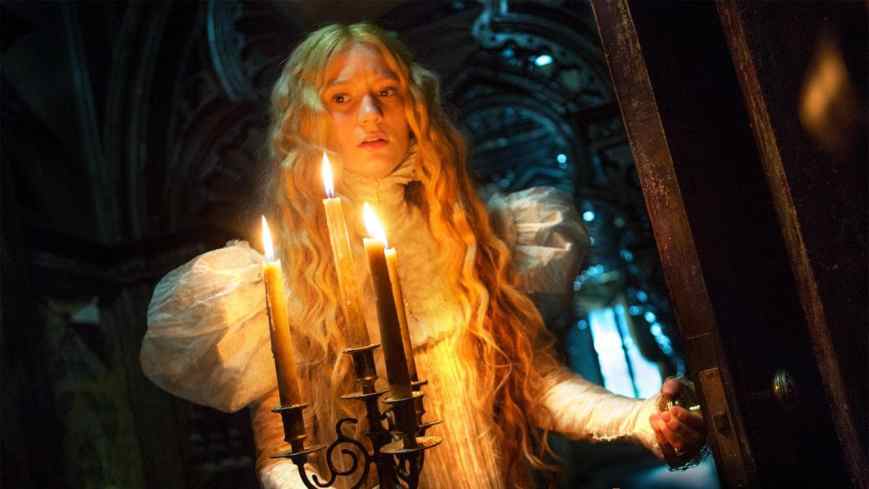
One of the sharpest darts in Guillermo Del Toro’s quiver of film skills is imbuing the violence in his films with an unnerving truth and viscerality. Visceralism. Spellcheck doesn’t like either of those words I made up but it can go to hell.
(Speaking of hell, Hellboy doesn’t quite bear this opinion out but, c’mon, it’s a comic book film.)
But “truth” and “viscerality,” I mean that the violence in his films is often precise and horrifying. It appalls–but not in a gore-slick slasher film way. Human beings destroying other human beings is contemptible and vile. See: PAN’S LABYRINTH.
In perhaps the film’s most disturbing sequence, Captain Vidal, that evil son-of-a-bitch, beats a peasant farmer to death with a bottle. The suddenness of his striking, the way the farmer’s face crumples and craters under the blows, the sickening sound effects, how his elderly father whimpers for mercy–it all combines into a melange of motherfucking grimness. It’s graphic, and it’s the first death in the film. After watching it, I can feel the rage and evilness it would take to kill someone. And it makes me sick. That’s the power of this sequence–there’s a weight to it. This is real violence–not Tom Cruise picking off faceless cartoon henchmen or the Hulk punching faceless cartoon aliens. It paints everything that follows a lot darker. It recalibrates the tone for the film. Violence is not amusing–it’s a horror.
The face-cratering sequence in PAN’S LABYRINTH is echoed in a sequence in CRIMSON PEAK in which our hero’s Rich Daddy is murdered. His face is pounded over and over again into the corner of a porcelain sink. This face-cratering death is less surprising than Captain Vidal’s farmer assault, but it’s just as brutal. And graphic. And shocking. And the carnage is revisited in a literal post-mortem scene.
And, just like in PAN’S LABYRINTH, this first violent death in CRIMSON PEAK recalibrates the tone of the everything that follows. We see that this isn’t just a ghost story with fake-y supernatural violence–it’s a story with dirty, grim, human-on-human violence.
But the film’s goofy third act doesn’t follow through on this promise–and that’s one of its main flaws.
The first two acts in a nutshell: Bookish and beautiful Edith (Mia Wasikowska) eschews the socialite’s life in turn-of-the-century Buffalo, New York with her rich father, preferring instead to work on her novel. That is until penniless nobleman Sir Edward Sharpe (Tom Hiddleston) enters the picture and, with the help of his frostily enigmatic sister Lucille (Jessica Chastain), conspires to seduce Edith and steal her family’s fortunes. Naive and radiant Edith falls for Edward, Rich Daddy is murdered, and our story relocates to the Sharpe’s familial manor in gloomy old England: Crimson Peak. Exploring the opulent squalor of the dilipitated manor, Edith discovers two things the audience figured out ages ago: 1) that she’s being poisoned so brother/sister can get all her Buffalo money and 2) brother/sister touch each other in their no-no places when nobody’s looking. Dark times indeed. Luckily for Edith, her childhood friend Dr. Alan McMichael (Charlie Hunnam), crosses the Atlantic to rescue her. This sets up the chases and fights that end the film.
But here’s where things fall apart. With those “chases and fights” that give the film its predictable Hollywood ending, Guillermo Del Toro reneges on the promise of the violent sink-to-face murdering of Rich Daddy. The promise that his characters suffer and hurt each other in ways that reinforce the idea that violence is evil, awful, disturbing, disgusting.
Instead, our protagonists turn into action film avatars that shrug off broken bones and mortal-seeming wounds to leap, punch, and stab each other in satisfying crowd-rousing ways. Edith is pushed over a third-floor railing, tumbles spine-first onto the second-floor railing, bounces off, and then slams into the parquet floor below. When she wakes up, Dr. Alan informs her that her leg is broken but he’s set the bones.
Does this stop her from running and jumping and climbing and fighting Lucille like a goddamn ninja? Nope, not at all. Just as having a knife plunged into his left armpit and then his chest doesn’t stop Dr. Alan from evading his captors, fighting for his life, and hiking through a snowstorm to the nearest village.
Lucille is stabbed also but it just makes her angrier. Of course. She’s a bad guy.
Edward, not one to be left out, is stabbed too. But he also takes a knife to the face, causing him to burble while his eye fills up with blood as he expires. But rather than make us ponder the grim horrors of violence, this mechanism is more movie-magic-interesting (would that really happen if you got stabbed in the face?) than horrifying.
The tone set by Rich Daddy’s death has been long since shattered. Edward’s death is a mere moment of entertainment with only the power to keep us watching rather than feel anything. The violence done to Edith and Dr. Alan are plot points that are designed, unsuccessfully, to imperil the inevitable Hollywood ending. They’re head fakes as the plot clanks on. Violence becomes an airy insignificant thing.
It’s an empty paint-by-numbers finish to the story. It’s a sharp dart blunted for Del Toro. And that’s kinda sad.